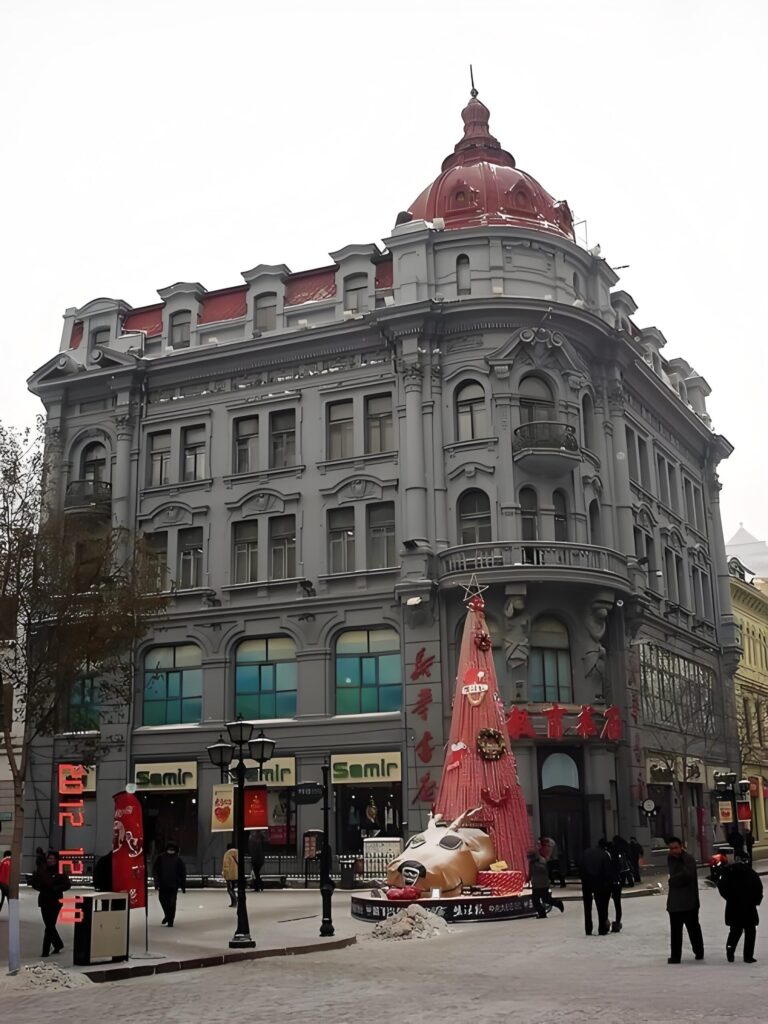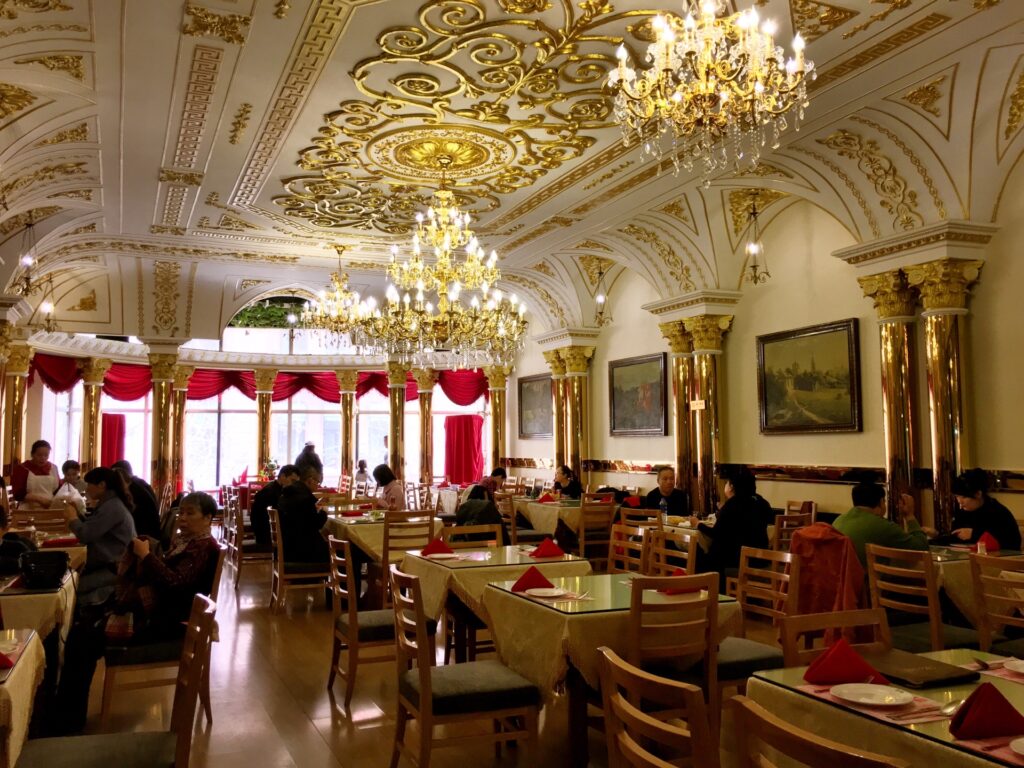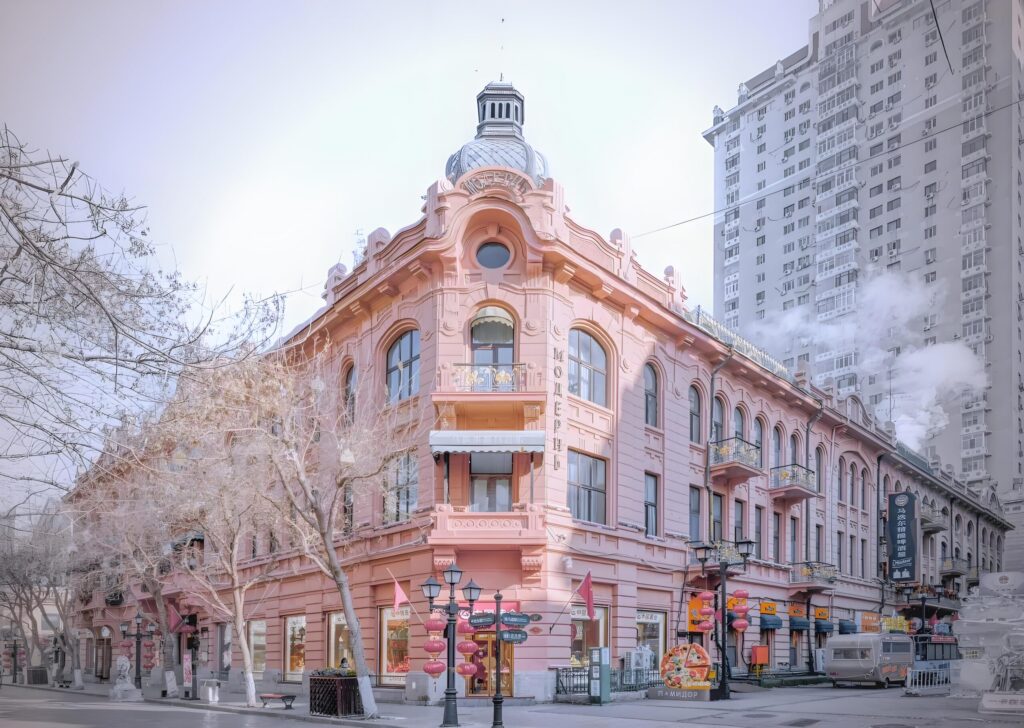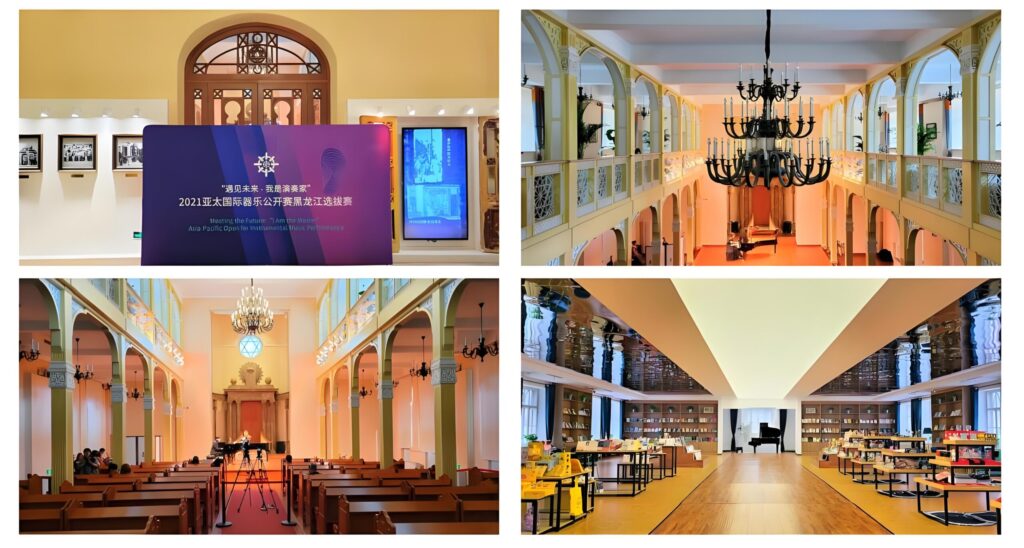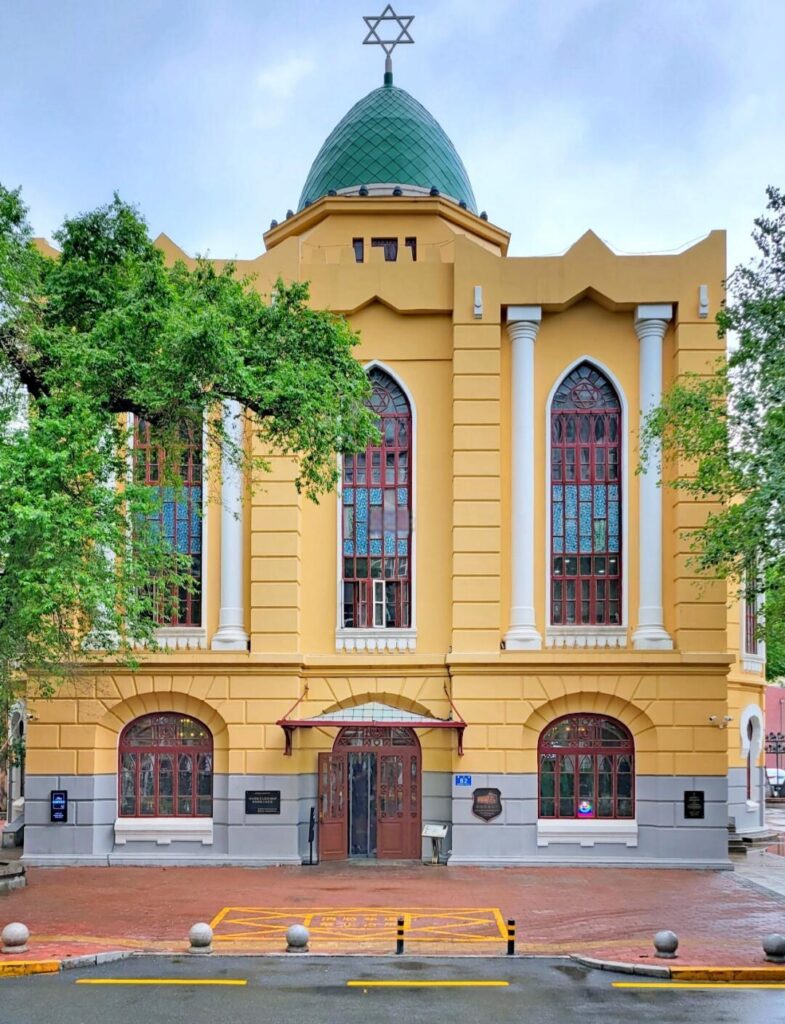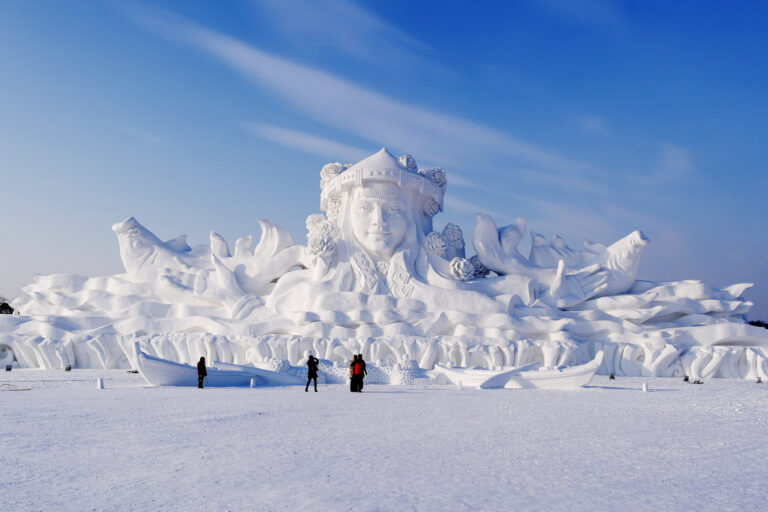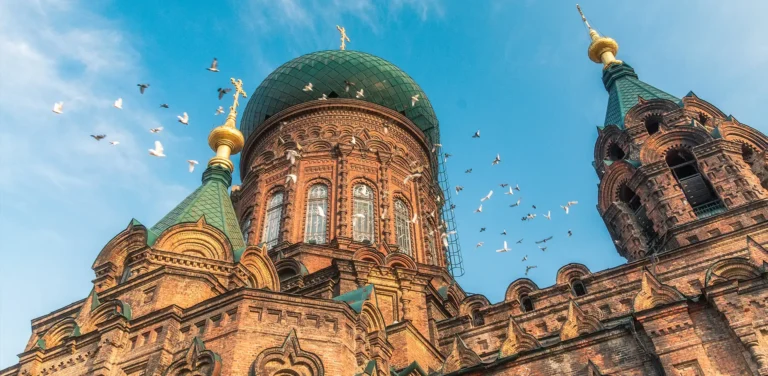Harbin Zhongyang Pedestrian Street: The Ultimate Guide to Ice City’s Historic Heart
Welcome to Harbin! We at Travel China With Me have journeyed across the length and breadth of China. We have seen ancient city walls and futuristic skylines. Yet, few places resonate with the soul quite like Harbin Zhongyang Pedestrian Street. This is not merely a street. It is a grand, open-air museum of architecture. It is a vibrant corridor of history. It is the undeniable, beating heart of China’s magnificent “Ice City.”
To walk on its century-old cobblestones is to travel through time. The elegant European facades are not just beautiful. They are stone-carved storybooks of a fascinating, international past. We have guided countless travelers down this 1.4-kilometer stretch. We’ve shared its secrets with families, historians, and adventurers. Every single visit reveals a new detail, a hidden gem.
This guide is our promise to you. We’ve poured all our expertise and personal experiences into these words. We want to ensure you don’t just see Zhongyang Street, but that you truly experience its magic. Let’s begin our unforgettable journey together.
Quick Facts
Chinese Name: 中央大街 (Zhōngyāng Dàjiē)
Location: Daoli District, Harbin, Heilongjiang Province
Length: 1,450 meters
Width: 21.34 meters
Year Built: 1898
Admission: Free entry 24/7
Best Season: December to February (winter)
Architectural Styles: Renaissance, Baroque, Byzantine, Eclectic, Art Nouveau
Protected Buildings: 13 city-level protected buildings, 71 European-style structures
Table of Contents
The Deep Roots of Zhongyang Street: A History
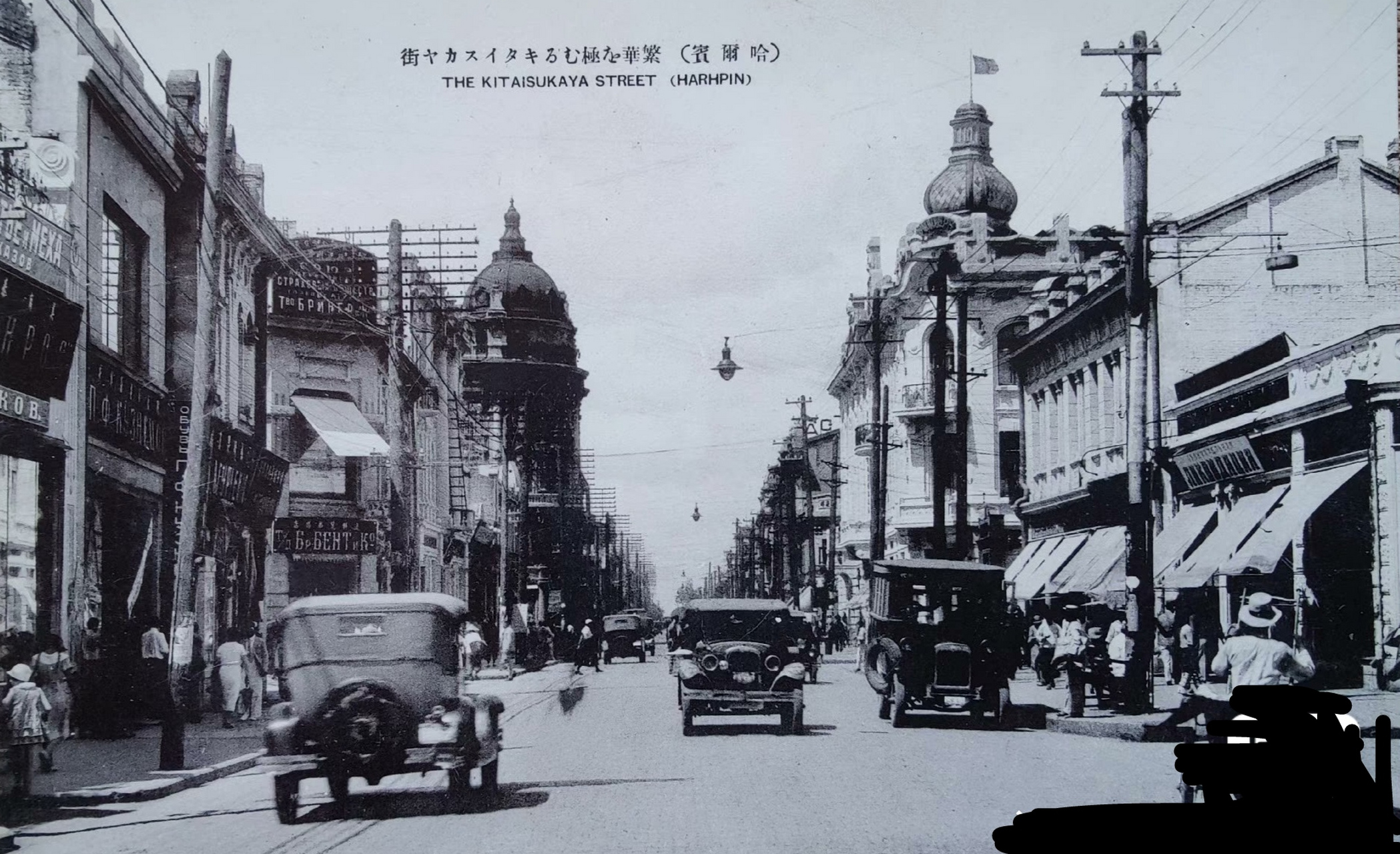
The story of Zhongyang Street is inseparable from the birth of modern Harbin. Its history is a fascinating tapestry woven with threads of international ambition, conflict, and cultural fusion.
From a Swampy Path to a bustling “Chinese Street”
Before 1898, this area was nothing more than a desolate, swampy riverbank. Everything changed with the Chinese Eastern Railway. This project, a southern branch of the Trans-Siberian Railway, was a Russian initiative to expand influence in Manchuria. Harbin was chosen as the railway’s administrative center. Thousands of Russian engineers, officers, and merchants arrived.
The original settlement, Nangang District, was for the Russians. The Chinese workers who built the railway were relegated to the area that is now Daoli District. They created a dirt path to transport goods from the river. This path was the humble beginning of today’s grand avenue. They called it “Chinese Street” (中国大街, Zhōngguó Dàjiē).
The Paving of a Legend
In 1924, the street underwent a monumental transformation. A Russian engineer, whose name is recorded as I. K. S. Koshlov, was commissioned to pave it. He chose a durable granite stone, yet it was the shape that became legendary. Each stone was meticulously crafted into the shape of a Russian “khleb,” a type of small, oblong bread loaf. These stones, measuring 18 cm long and 10 cm wide, were laid vertically. This unique method made the surface incredibly resilient. It is a testament to the quality of this work that the very same stones remain under your feet today, over a century later.
As Harbin’s international population swelled—with residents from over 30 countries, including a significant Jewish community who built their own synagogue—the street flourished. In 1925, its name was officially changed to “Central Avenue” (Zhongyang Dajie) to reflect its status as the city’s commercial and financial hub. It was lined with the most prestigious banks, hotels, and foreign goods stores, earning it another nickname: “The First Street of the East.”
Why Zhongyang Street Deserves a Top Spot on Your Itinerary
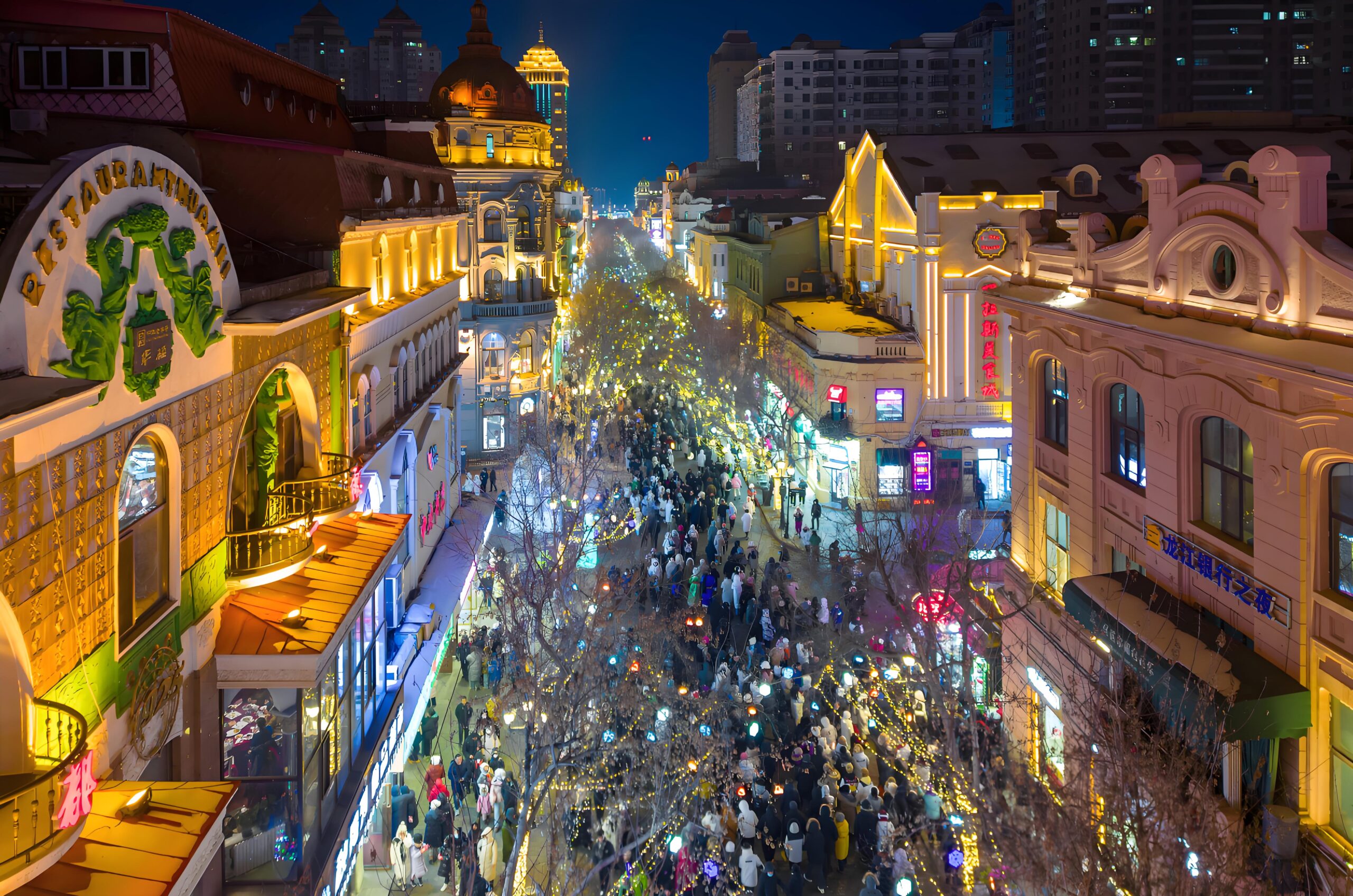
In a country full of amazing sights, why should you prioritize this particular street? We believe the reasons are compelling and unique.
An Unparalleled Architectural Showcase
This is the primary draw. The street is a timeline of early 20th-century European architectural trends. You do not need to be an architect to appreciate the beauty. The sheer diversity is astounding. Lavish Baroque details sit alongside the flowing, organic lines of Art Nouveau. The grandeur of the Renaissance is reflected in symmetrical facades. This collection is not a replica. These are original buildings, constructed by the people who lived here.
Professor Wang Jun, a cultural heritage expert at Peking University, stated, “Zhongyang Street is a living fossil of urban modernization in Northeast China. Its preservation allows us to physically walk through a unique period of cultural and economic exchange between China and the West.”
A Culinary Bridge Between Cultures
The food here is a delicious history lesson. The Russian influence is undeniable. You can find authentic borscht, smoked sausages, and dark rye bread. This cuisine coexists with the hearty, soulful food of Northeast China (Dongbei Cai). This fusion creates a unique culinary landscape. Eating a Madieer ice pop in -20°C weather isn’t just a gimmick; it’s a cultural ritual.
The Epicenter of Harbin’s Seasons
Zhongyang Street is the city’s main stage. It changes its costume with the seasons.
- In Summer: It becomes a vibrant, open-air cafe society. Locals and visitors enjoy the pleasant “Harbin Summer Concert” and the city’s famous beer festival. The long daylight hours create a relaxed, festive mood.
- In Winter: It transforms into a fairy-tale kingdom of ice. As the heart of the Harbin International Ice and Snow Festival, the street becomes an outdoor gallery of breathtaking ice sculptures. Lit from within, they cast a magical glow on the historic buildings.
Must-See Highlights: A Curated Walking Tour
Let’s walk the street together. We suggest starting from the south end (intersection with Jingwei Street) and walking north toward the Songhua River. This builds the anticipation for the grand finale at the flood monument.
The Architectural Jewels
Don’t just glance at these buildings; take a moment to truly appreciate their stories.
- Modern Hotel (No. 89 Zhongyang Dajie): An icon of Harbin. Built in 1906, it’s a masterpiece of the Art Nouveau style, evident in its flowing lines and floral motifs. Originally the Hotel Moderne, it was the most luxurious hotel in the city. It hosted dignitaries, artists, and spies. The ground-floor restaurant, once a famous meeting spot, still serves its legendary bread and pastries. We love to sit here with a coffee, imagining the history that unfolded within these walls.
- Education Bookstore (No. 128 Zhongyang Dajie): This magnificent Baroque building from 1909 will stop you in your tracks. Originally the Matsuura Foreign Goods Store, its facade is a symphony of ornate details, columns, and sculptures. It represents the peak of commercial luxury during Harbin’s golden age.
- Huamei Western Restaurant (No. 112 Zhongyang Dajie): Founded in 1925 by a Russian immigrant, this is more than a restaurant; it’s an institution. Its eclectic architecture is charming. The interior, with its dark wood and classic decor, feels like a time capsule. Dining here offers a taste of the authentic Russian heritage that defines Harbin.
- Former Jewish New Synagogue (Now Harbin Old Synagogue Concert Hall): While not directly on the street, it’s a very short detour down Tongjiang Street. This Byzantine-style masterpiece was the center of Harbin’s once-thriving Jewish community. It has been beautifully restored and now serves as a concert hall. It’s a poignant reminder of the city’s diverse past.
A Feast for Your Taste Buds
Prepare for a culinary journey. Here’s what you absolutely cannot miss.
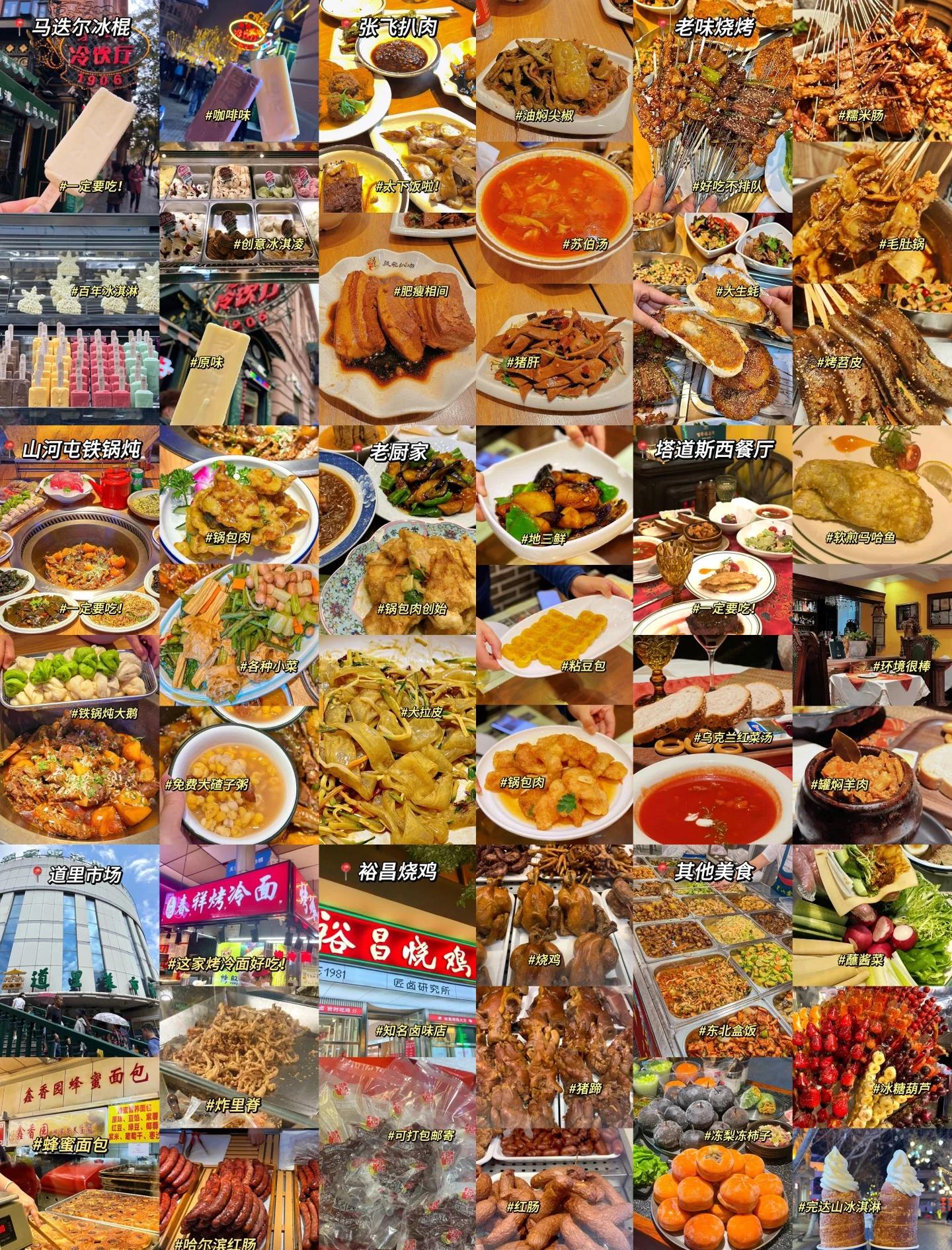
The Madieer Ice Cream Ritual
You will see the queue before you see the stall. The Madieer (马迭尔, Mǎdié’ěr) popsicle stand at No. 89 is legendary. Founded by a French-Jewish immigrant, the recipe has remained unchanged for over 100 years. It’s made with a higher butterfat content, giving it a rich, creamy texture that doesn’t feel icy-hard even in extreme cold. The classic vanilla flavor is the most popular. The local belief is that the extreme cold outside makes the ice cream taste even better. It’s a rite of passage, a shared experience that connects you instantly with the locals.
Authentic Russian Flavors
- Huamei Restaurant: We recommend their classic set menu. It’s a full experience: rich, beet-based borscht (red vegetable soup), pan-fried steak or fish, and their famous baked bread.
- Portman Restaurant (Tatos): Another historic spot. It has a slightly more upscale feel. We love their shashlik(grilled meat skewers) and pelmeni (dumplings).
- Russian Delicacies Shops: Many small shops along the street sell Russian goods. Look for Dal Lieba (大列巴), a huge, dense sourdough bread. Also try Harbin Hongchang (红肠), a smoked, garlicky red sausage. These make for perfect, hearty snacks.
Essential Dongbei (Northeastern) Treats
- Guo Bao Rou (锅包肉): This is the signature dish of Dongbei cuisine. It’s crispy, sweet and sour pork. While you might not find a fine dining version on the main street, many side-street restaurants serve excellent versions.
- Tanghulu (糖葫芦): These candied hawthorn berries on a stick are a classic northern winter snack. The bright red skewers are visually appealing and deliciously tangy.
- Roasted Sweet Potatoes & Corn: In winter, the smell of charcoal-roasted sweet potatoes and corn fills the air. Buying one from a street vendor is a simple, warming, and authentic experience.
The Unforgettable Winter Experience
Visiting between late December and February is a decision you will never regret. The cold is intense, but the reward is a world transformed by ice and snow.
The Ice Sculpture Gallery
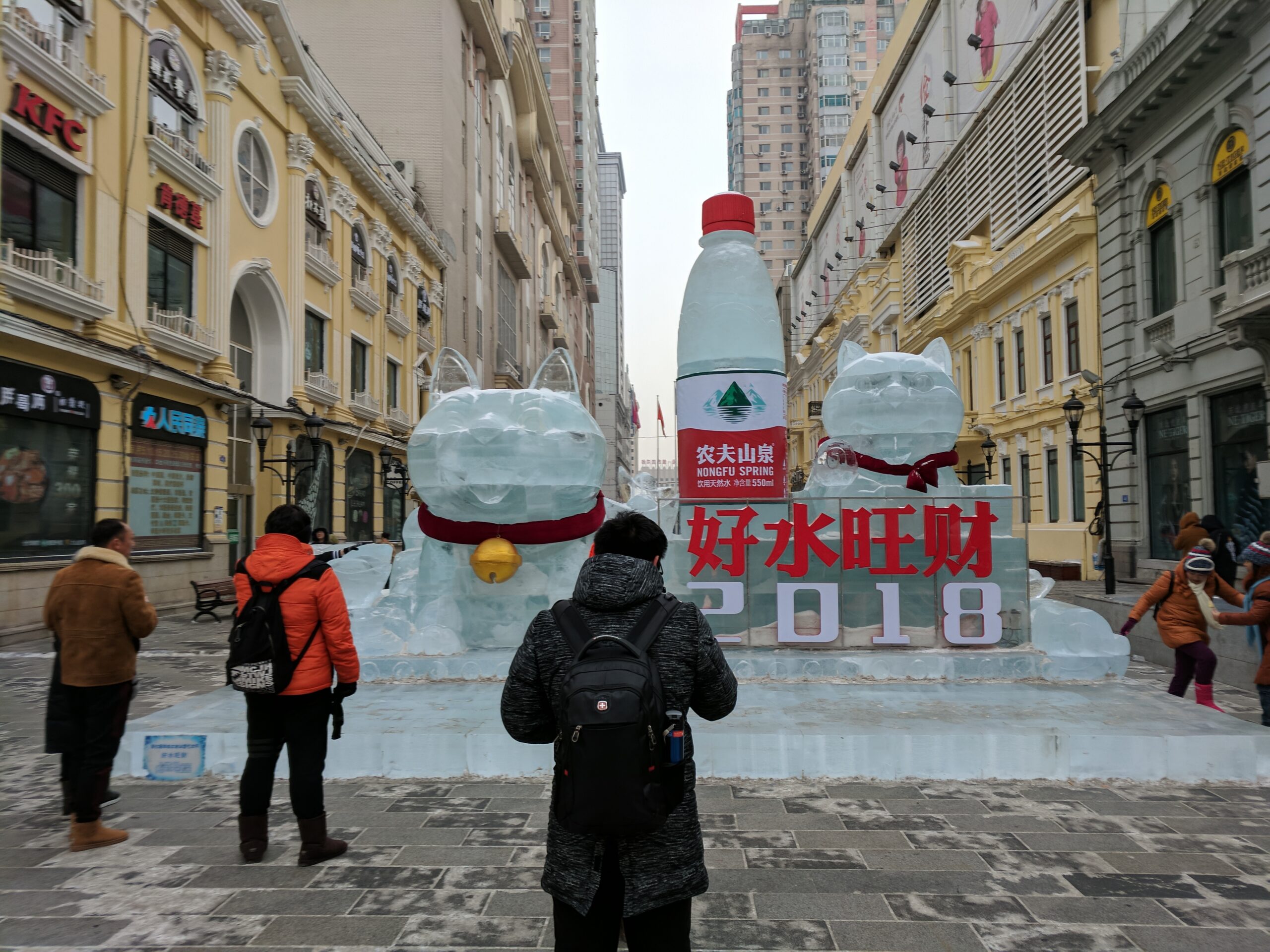
Zhongyang Street becomes a main artery of the Harbin International Ice and Snow Festival. Unlike the massive structures at the main festival grounds, the sculptures here are more intricate and artistic. They are placed along the entire length of the street. Companies sponsor sculptures, leading to incredible displays of branding and artistry. At night, they are illuminated with a rainbow of LED lights, turning the street into a surreal, glowing wonderland. The contrast between the cold, sharp ice and the warm, historic buildings is simply breathtaking.
The Songhua River Playground
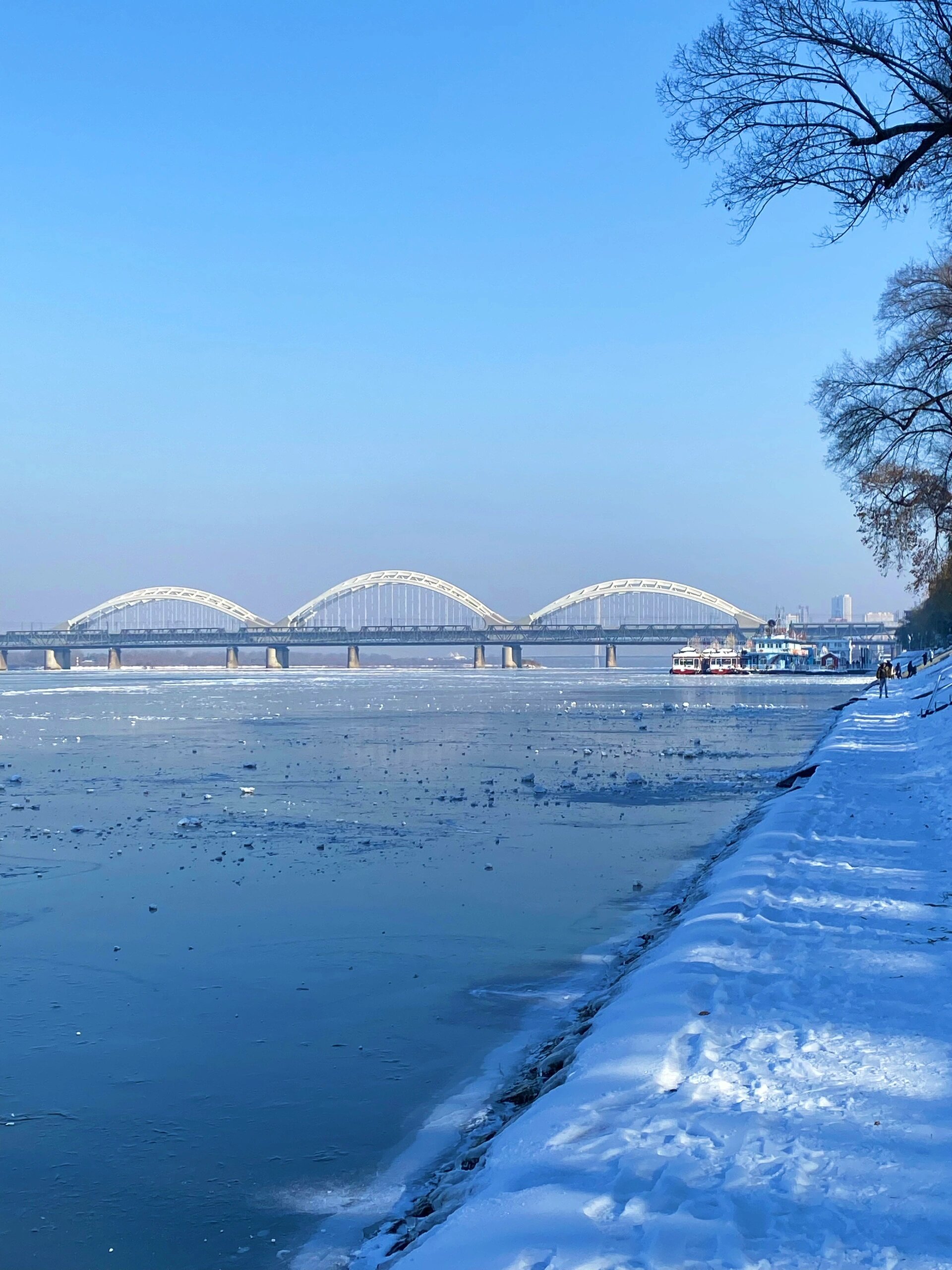
The street leads directly to the Flood Control Monument on the bank of the Songhua River. In winter, this mighty river freezes solid, several feet thick. It becomes a vast, natural amusement park. We’ve spent many happy hours here. You can rent ice skates, ride in an “ice chair” pushed by a guide with poles, or try your hand at ice cycling. There are even small ice slides and dog sledding rides. The joyous sound of people playing on the frozen expanse is the perfect end to a walk down Zhongyang Street.
Planning Your Visit: Practical Information
Getting There From Major Points
Starting Point | Best Transport | Time | Cost |
|---|---|---|---|
Taiping Airport | Metro Line 3 → Line 2 | 70-80 min | ¥4 |
Airport Bus Line 3 | 45-60 min | ¥20 | |
Taxi/DiDi | 40-50 min | ¥80-120 | |
Harbin Railway Station | Metro Line 2 (2 stops) | 8 min | ¥2 |
Taxi/DiDi | 10-15 min | ¥15-20 | |
Walking | 35-40 min | Free | |
West Railway Station | Metro Line 3 → Line 2 | 30-35 min | ¥4 |
Taxi/DiDi | 25-30 min | ¥40-60 |
Metro Line 2 serves Zhongyang Pedestrian Street. Zhongyang Street Station puts you right at the street’s center. Exit 4 leads directly to the pedestrian street. The metro is clean, modern, and has English signage.

Opening Hours and Tickets
Item | Details |
|---|---|
Street Access | 24 hours daily, completely free |
Shop Hours | Generally 9:30 AM – 9:30 PM |
Restaurant Hours | 10 AM – 10 PM (some until midnight) |
Best Visiting Hours | 2 PM – 9 PM for full experience |
Winter Light-up | 4:30 PM – 10 PM (ice sculptures) |
The street itself charges no admission. You can walk it anytime day or night. Individual attractions or museums may charge separate fees.
When Should You Visit?
The “best” time is subjective and depends entirely on your travel style.
- Winter (December – February): This is the high season, for good reason. The Ice and Snow Festival creates a magical atmosphere that is unique in the world. The city is alive with a festive spirit. Who is it for? Travelers who want the full, iconic “Ice City” experience and are prepared for extreme cold (temperatures can drop below -25°C / -13°F).
- Summer (June – August): A hidden gem. Harbin becomes a cool and pleasant escape from the heat in other parts of China. The street is perfect for evening strolls, with outdoor music and a relaxed vibe. Who is it for? Travelers who prefer comfortable weather, fewer crowds than in winter, and want to experience the city’s lively culture.
- Spring & Autumn (April-May, September-October): The shoulder seasons. The weather is mild, though can be unpredictable. You’ll find fewer tourists and potentially lower prices. It’s a wonderful time to focus purely on the architecture and local life without the distraction of a major festival.
Insider Tips for a Perfect Visit
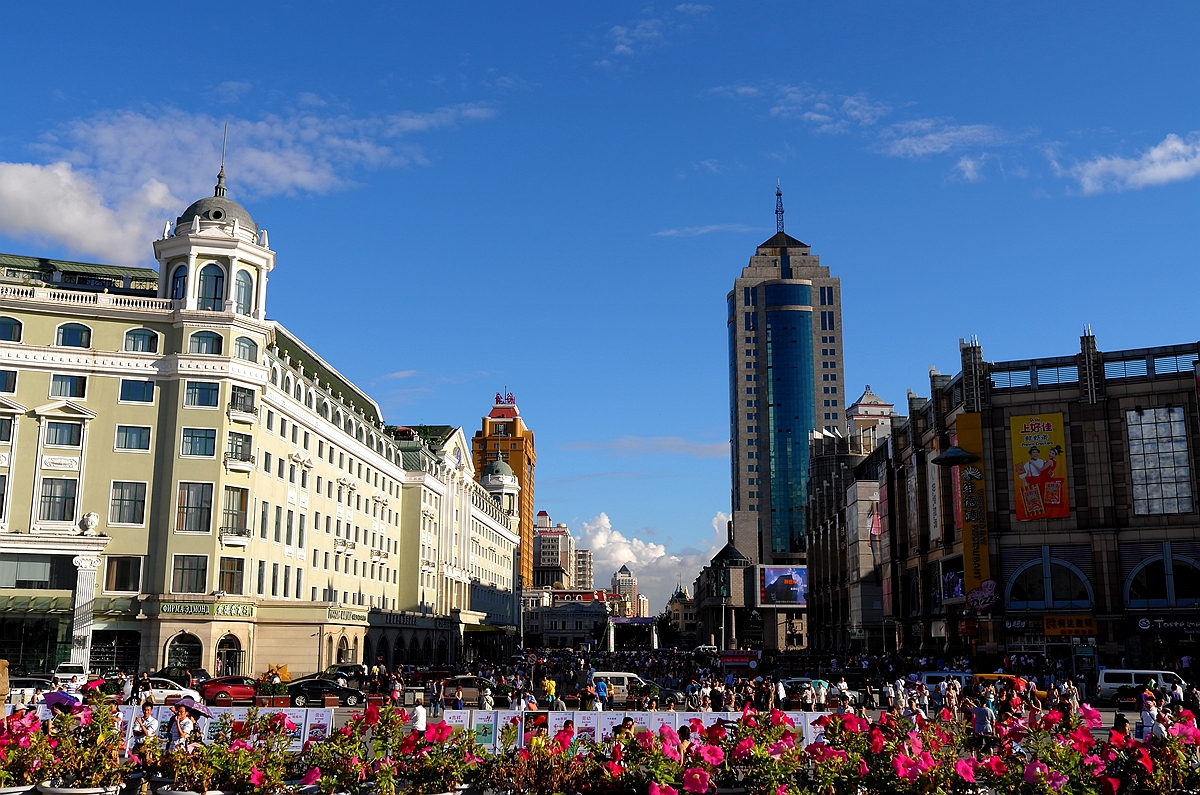
Having been here countless times, we’ve gathered some practical wisdom.
- Dress for the Elements: In winter, this is not a suggestion—it’s a requirement for your safety and comfort. Multiple layers are essential: thermal underwear, fleece/wool mid-layers, and a high-quality down jacket. Crucially, wear waterproof, insulated boots with excellent grip. The cobblestones get icy. Hand and foot warmers are your best friends.
- Explore the Alleys: The side streets that branch off Zhongyang Dajie are full of treasures. You’ll find smaller, more authentic restaurants, quirky cafes, and interesting shops away from the main tourist flow.
- Battery Life is Key: The extreme cold of a Harbin winter can drain your phone and camera batteries in minutes. Keep them in an inside pocket close to your body heat. A portable power bank isn’t just a good idea; it’s essential.
- Bargain with a Smile: In the smaller souvenir shops, bargaining is acceptable. Always be polite and respectful. Start at about 50-60% of the asking price and meet somewhere in the middle. In brand-name stores and restaurants, prices are fixed.
- Night and Day: Visit the street twice: once during the day to appreciate the architectural details and again at night to see the buildings and ice sculptures beautifully illuminated. The atmosphere is completely different.
Real Traveler Reviews
We’ve collected genuine feedback from travelers we’ve guided along Zhongyang Street. These perspectives help set realistic expectations.
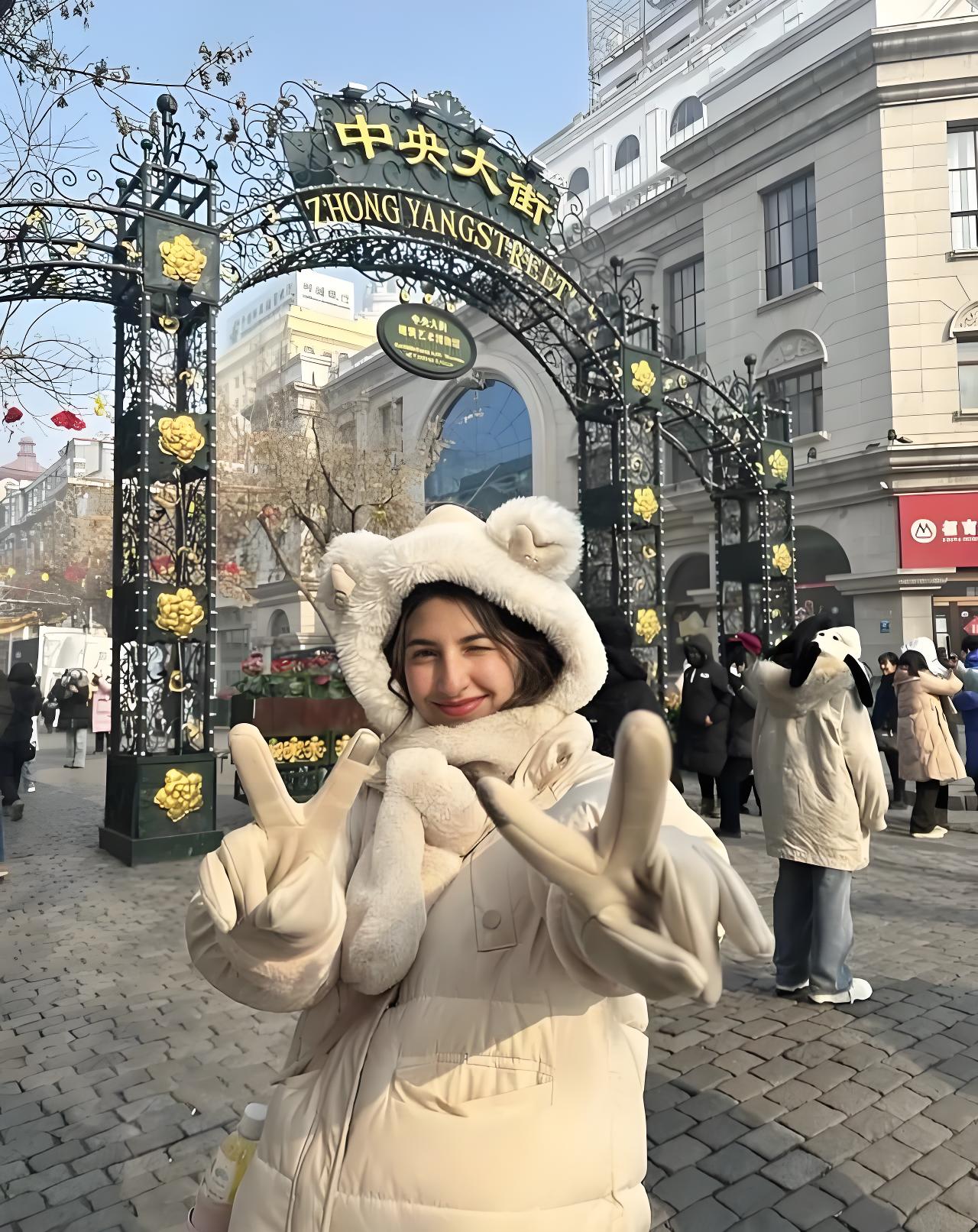
Architecture Enthusiasts
Michael, Germany (visited January 2024): “As an architecture professor, I found Zhongyang Street absolutely fascinating. The preservation quality exceeded expectations. Buildings span multiple European periods, all remarkably intact. I spent four hours just photographing facades. The Modern Hotel’s Art Nouveau details rival anything in Paris. Winter added atmosphere—snow on Baroque cornices looked magnificent. My only frustration was limited English information about building histories. Hire a knowledgeable guide if you want detailed historical context.”
Sarah, United Kingdom (visited September 2023): “After visiting European pedestrian streets for years, Zhongyang Street surprised me. It’s not trying to replicate Europe—it’s showing how European architecture adapted to Chinese context. The scale feels grand but not overwhelming. I loved discovering Russian Orthodox crosses next to Chinese signage. The street feels authentic, not fake touristy. September weather was perfect for walking and photography without the extreme cold.”
Families
The Chen Family, Singapore (visited February 2024): “Traveled with kids aged 8 and 11. They loved the street despite initial worries about keeping them interested. Ice sculptures fascinated them. Russian ice cream became a daily treat. Several international brand stores gave them shopping options. Street performers provided free entertainment. Food options worked for picky eaters—both Western and Chinese choices available. Only challenge was the extreme cold. Kids tired after an hour outside. We ducked into warm shops and restaurants frequently to warm up.”
Food Lovers
Antonio, Italy (visited December 2023): “As a chef interested in culinary history, Zhongyang Street provided fascinating insights. The Russian food here is authentic—recipes passed down from original settlers. Tatoc Restaurant’s borscht was excellent, though I waited 90 minutes for a table without reservation. Russian bakeries sell bread using century-old techniques. Winter specialties like frozen pears and ice cream were interesting novelties. Overall, food was good but not the primary reason to visit. Come for architecture, stay for decent authentic meals.”
Solo Travelers
Emma, Australia (visited November 2023): “Traveled alone and felt completely safe walking Zhongyang Street at all hours. November was shoulder season—fewer tourists, pleasant weather around 5-10°C. The street’s length meant I always found uncrowded sections for photography. Solo dining was comfortable—many restaurants welcome single diners. I made friends with other travelers and some English-speaking locals. Metro access made independent travel easy. Would highly recommend November for solo travelers seeking authentic experiences without peak-season chaos.”
Budget Travelers
Mei and Jun, Malaysia (visited May 2024): “We backpacked through China on a tight budget. Zhongyang Street offered free entertainment—just walking and observing costs nothing. We ate at smaller restaurants on side streets where meals cost ¥30-50 per person versus ¥80-150 on the main street. The street’s main attractions don’t require admission. We stayed at a hostel 15 minutes walk away for ¥80/night shared room. Spring weather meant no expensive heating or heavy winter gear purchases. You can experience the street meaningfully without spending much. Just avoid prime winter festival season when everything costs significantly more.”
Your Questions Answered (FAQ)
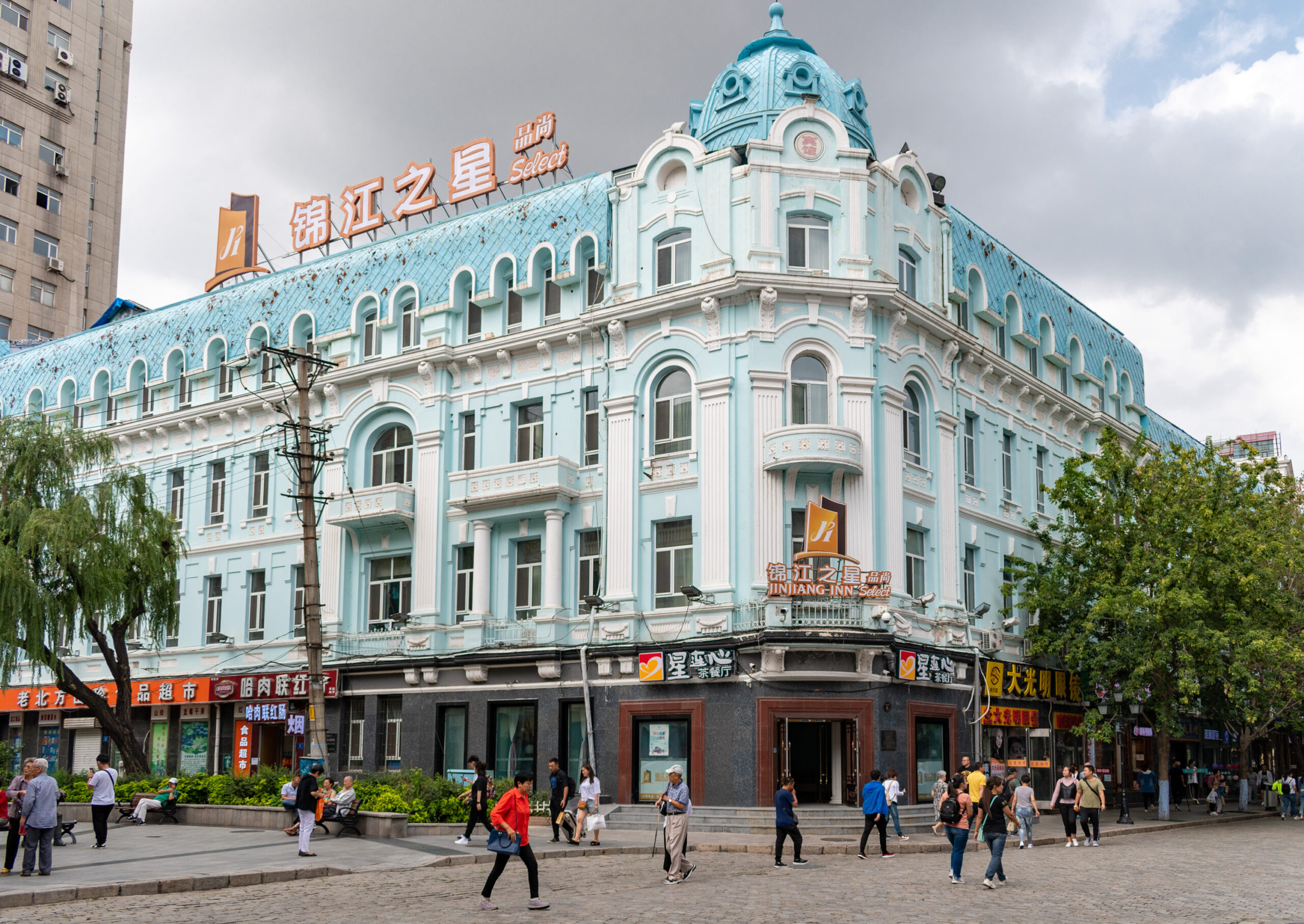
Q: How much time should I allocate for Zhongyang Pedestrian Street?
A: We recommend a minimum of half a day (4 hours). A full day is even better if you want to explore the side streets, have a leisurely meal, visit the Synagogue, and spend time on the frozen river.
Q: Is it safe for solo travelers?
A: Yes, it is very safe. The street is well-lit, and there’s always a police presence. As with any crowded tourist area, be mindful of your pockets and belongings, but violent crime is extremely rare.
Q: Are there good photo opportunities?
A: It’s a photographer’s dream. For the best light, go in the early morning to capture the architecture without crowds. The “golden hour” before sunset bathes the buildings in warm light. At night, the illuminated buildings and ice sculptures offer dramatic shots (bring a tripod if you’re serious about night photography).
Q: What souvenirs are worth buying?
A: Beyond the usual trinkets, look for high-quality Russian products like Matryoshka nesting dolls, Fabergé egg replicas, and Russian chocolates. Harbin Hongchang (red sausage) is a great edible souvenir, and the local blueberry products are also excellent.
DIG DEEPER: 23 Best Souvenirs from China to Bring Home: A Complete Guide
A Final Word from Our Team
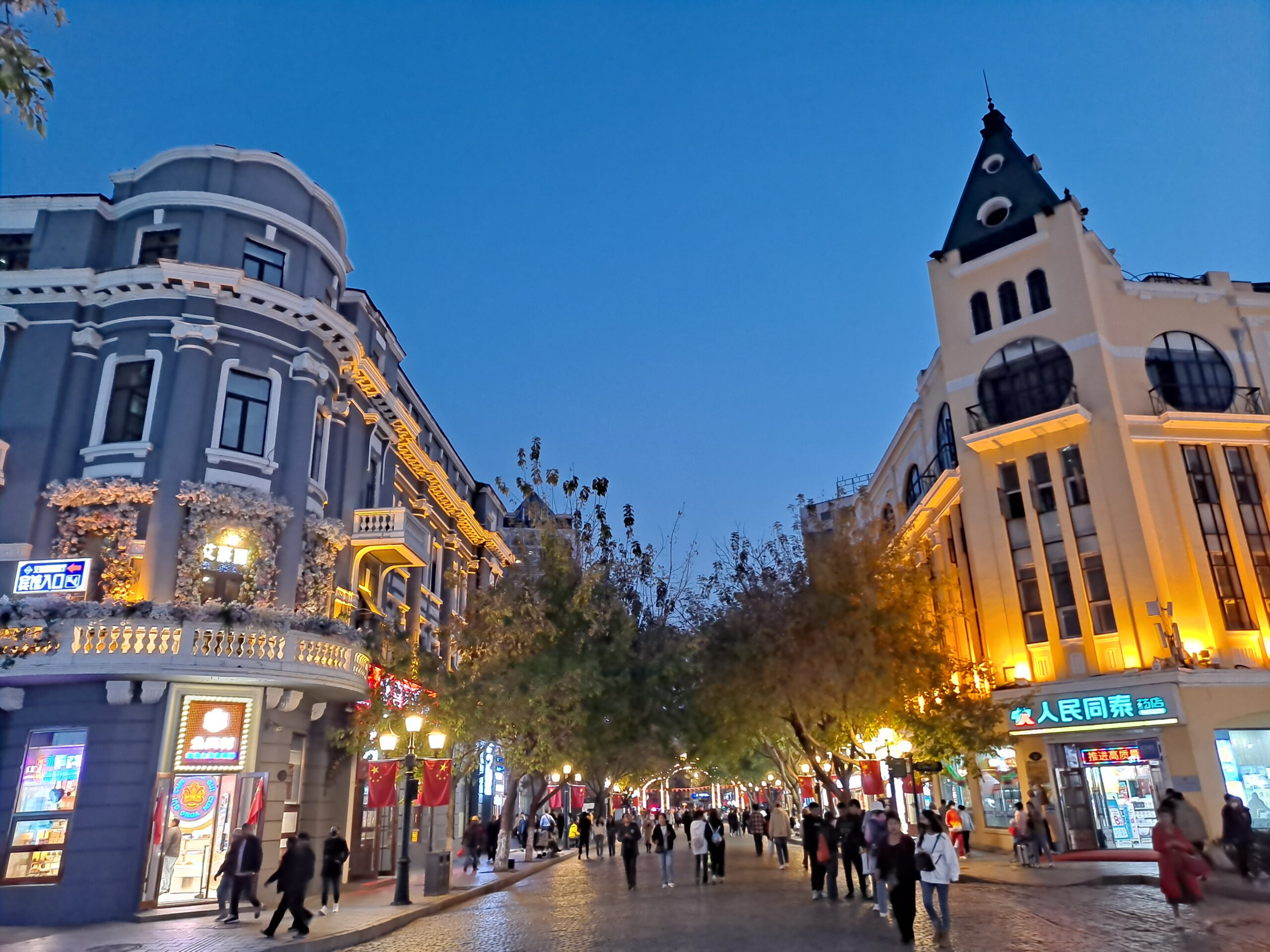
We have guided travelers to every corner of this vast country. But there is a unique and enduring magic to Zhongyang Street. It’s in the crunch of snow under your boots as you gaze at a glowing ice sculpture. It’s in the taste of a century-old ice cream recipe. It’s in the quiet dignity of the Baroque facades that have witnessed so much history.
This street is more than a destination; it’s an experience that connects you to a fascinating, multicultural chapter of China’s story. It’s a place of beauty, of flavor, and of unforgettable memories.
We are passionate about sharing the real China with you. We hope this guide inspires your own journey to Harbin’s historic heart. When you’re there, standing on those loaf-shaped stones, we hope you feel the same sense of wonder that we do every single time.
Safe travels, and we look forward to hearing about your adventure.



